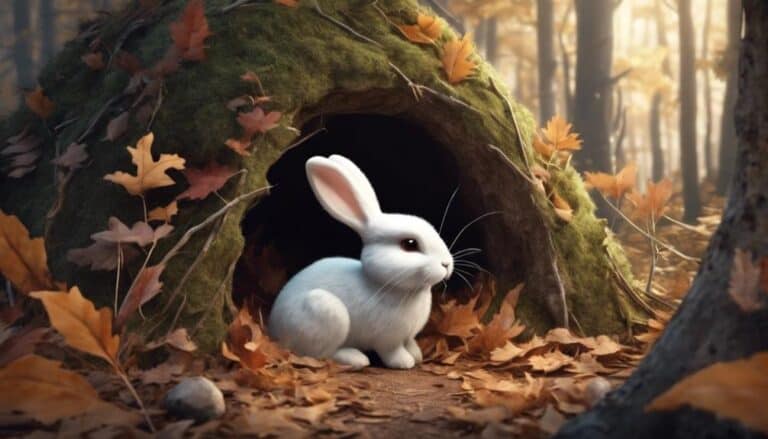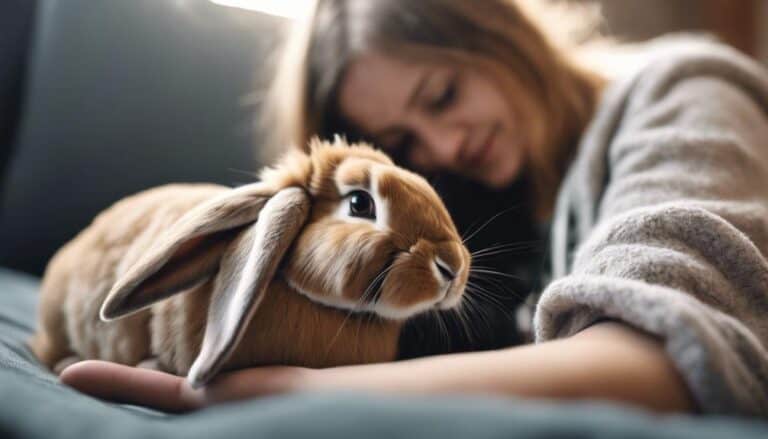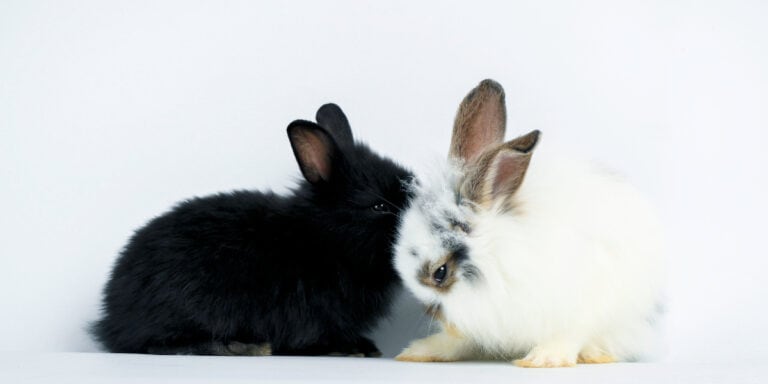Rabbits are not one of a kind, but rather have a whole family tree full of relatives that might surprise you.
It's natural to wonder who else is related to these adorable creatures. Let's take a closer look at Rabbit's family connections within the Lagomorpha order.
You'll find some pretty interesting similarities – not just in how they look, but also in how they behave.
Rabbit's relatives have some pretty cool secrets just waiting to be uncovered.
So, let's dive in and explore the fascinating world of Rabbit's extended family.
Contents
Key Takeaways
Rabbits have some pretty cool relatives, including hares, pikas, and cottontail rabbits. They all belong to the same family, called Leporidae.
But they're not the only ones that are similar to rabbits. There's a bigger group of animals called lagomorphs that share some key traits with them, like long ears and powerful hind legs. It's pretty clear that they all share a common evolutionary history, just by looking at their physical characteristics and adaptations.
What's really interesting is that these relatives of rabbits also exhibit similar behaviors. For example, they often live in groups and are herbivorous, just like rabbits.
Evolutionary History
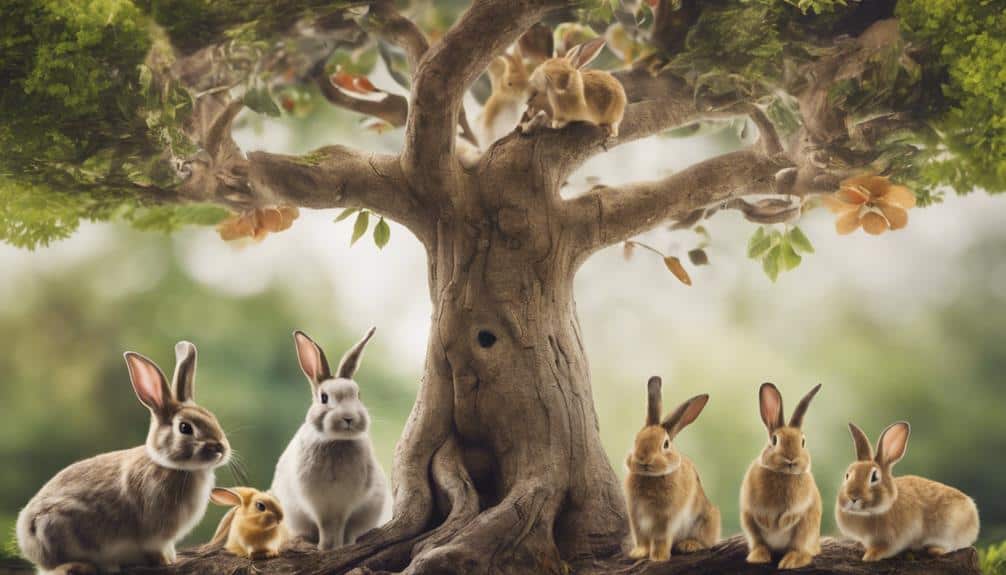
When you look at the evolutionary history of rabbits, you'll see a fascinating story of adaptation and diversification within the Lagomorpha order.
The family Leporidae, which includes rabbits and hares, has a rich evolutionary background that goes back millions of years.
The earliest members of the Leporidae family showed up in Eurasia during the Eocene epoch, according to fossil records.
These small mammals quickly spread across the globe, adapting to different environments and evolving unique characteristics to thrive in various habitats.
One of the most interesting things about the Leporidae family's evolution is the development of specialized teeth.
Rabbits have incisors that keep growing throughout their lives, which sets them apart from many other mammals.
This dental adaptation lets them eat fibrous plant material efficiently, which is a big part of their herbivorous diet.
Over time, these dental features have become super specialized to fit the specific dietary needs of rabbits, showing just how intricate the evolutionary processes are that have shaped these animals into what we see today.
Physical Characteristics
Rabbits and their relatives have some pretty cool physical features that help them survive.
Their large eyes, super sharp sense of smell, and excellent hearing give them an edge when it comes to detecting predators.
Plus, their soft, thick fur makes it easy for them to blend in with their surroundings.
These features aren't the only things that help them stay safe, though.
Rabbits also have strong teeth, super agile hind legs, and long ears.
These traits come in handy when they need to make a quick getaway from danger.
With these tools, they can move rapidly and make some seriously impressive evasive leaps.
Rabbit Family Tree
Rabbits owe their speed and agility to their unique physical characteristics.
One of the defining traits of the rabbit family is their skeletal structure, which includes large hind leg bones and well-developed muscles. These features allow rabbits to move swiftly and efficiently, using their powerful hind legs for propulsion.
When they're at rest, rabbits stand on their entire foot, which is called a plantigrade stance. But when they start running, they shift to a digitigrade posture, where they touch the ground only with their toes. This adaptation helps them move even faster and more agilely, which is crucial for evading predators.
Their foot bones are also specialized, allowing them to navigate their environment quickly. Their strong claws serve two purposes: they're a defense mechanism and also help rabbits maintain balance during rapid sprints.
The shape and structure of a rabbit's body are carefully designed for rapid bursts of movement, highlighting the family's evolutionary focus on survival through speed and agility.
Rabbits and hares have some pretty cool physical traits that help them survive in the wild. One of the most noticeable things about them is their long ears and powerful hind legs. These features are actually common among a group of animals called lagomorphs, which includes rabbits, hares, and pikas.
Their ears are super helpful for detecting predators and communicating with each other. And those powerful hind legs? They're perfect for rapid movement, jumping, and escaping from danger. It's no wonder they're so good at evading predators!
Another important trait they share is their soft, thick fur. This fur is amazing because it provides insulation, camouflage, and protection from the elements. You'll notice that their fur can range in color from brown to gray, which helps them blend in with their surroundings.
When it comes to their senses, rabbits and hares have large eyes and strong senses of smell and hearing. This helps them detect predators and find food, which is essential for their survival. They're also pretty small, typically measuring 10-20 inches in length and weighing between 2-12 pounds. But despite their size, they're super agile and nimble, which helps them move quickly and avoid danger.
Finally, their strong teeth are a key feature that helps them survive. Their teeth grow continuously throughout their lives, which allows them to chew on vegetation and excavate burrows in the soil. When you add it all up, these physical traits give lagomorphs the tools they need to thrive in their environments.
| Physical Traits | Description | Example |
|---|---|---|
| Long Ears | Aid in detecting predators and communicating with others | Rabbit's long ears |
| Powerful Hind Legs | Facilitate rapid movement, jumping, and escaping from danger | Hare's hind legs |
| Soft Thick Fur | Provides insulation, camouflage, and protection from the elements | Gray rabbit's fur |
Habitat and Adaptations
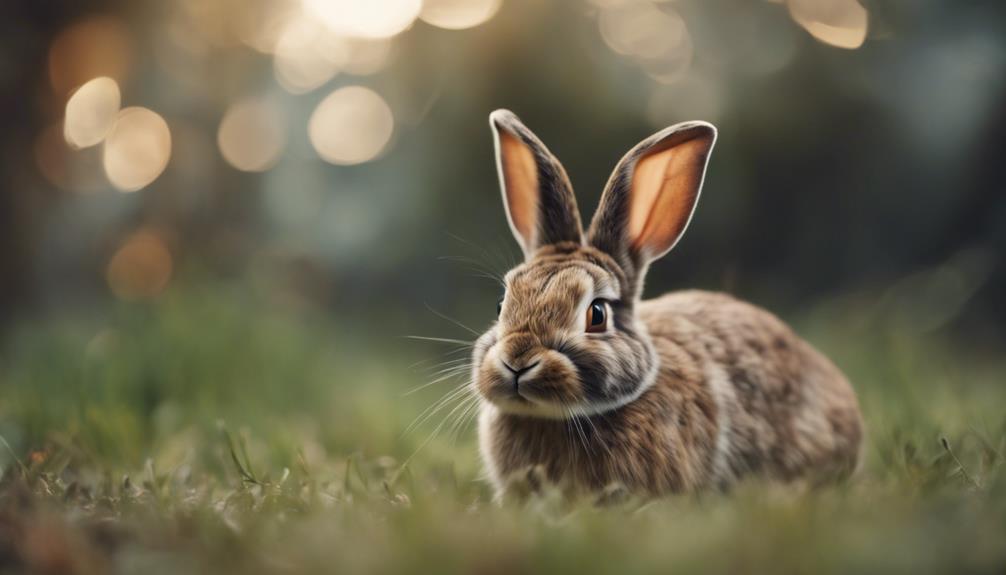
Rabbits are incredibly flexible when it comes to where they live. You can find them in meadows, forests, deserts, and even wetlands.
They're able to thrive in all these different environments because they've developed some really useful adaptations.
One of the most noticeable adaptations is their powerful hind legs. These let them make super-fast escapes from predators.
They also have really keen senses that help them detect danger before it's too late.
Natural Rabbit Habitats
Rabbits and hares are incredibly adaptable creatures that can be found in a wide range of habitats, from forests and grasslands to deserts. This is a testament to their evolutionary success, as they've learned to thrive in many different ecosystems.
You can find rabbits and hares native to Africa, Asia, Europe, and North America, often living in areas with dense vegetation and plenty of food. They tend to seek out habitats that offer suitable shelter, like burrows or thick vegetation, which protects them from predators and harsh weather.
One of their key adaptations is their physical attributes – strong hind legs, sharp claws, and a keen sense of smell and hearing. These traits enable them to survive and even thrive in their environments.
Rabbits and hares can be found in everything from wetlands and meadows to forests and deserts, and they're well-suited to habitats with varying levels of rainfall and temperature. Their ability to adapt to these diverse ecosystems is a demonstration of their impressive survival skills and evolutionary development.
Rabbit's Unique Adaptations
Rabbits have some amazing features that help them survive and thrive in all sorts of environments.
For example, their skeleton is perfect for moving quickly. They've big bones in their hind legs and strong muscles that let them generate a lot of power to propel themselves forward. When they're not moving, they're plantigrade, which means they walk on their whole foot. But when they need to run, they switch to a digitigrade stance, walking on their toes to get more speed and agility.
Their strong claws aren't just for defense; they're also super helpful for digging and burrowing. Rabbits need to be able to dig quickly to escape from predators or make hiding spots.
Their big hind legs and special feet let them cover a lot of ground fast – some rabbits can even run up to 45 miles per hour! This unique combination of features – powerful hind legs, special feet, and strong claws – helps rabbits do really well in all sorts of habitats and easily avoid predators.
Behavioral Traits
Rabbit's relatives, the small white orphan rabbits from various Disney productions, have some pretty distinctive behavioral traits.
These little mammals, inspired by A.A. Milne's characters, are playful and mischievous. You can see this in The New Adventures of Winnie the Pooh episode Party Poohper, where they visit Rabbit and create chaos. They're energetic and curious, and their lively interactions with each other and their surroundings are voiced by Frank Welker.
These rabbits are also very social and stick together in their adventures, like in Disney's Hunny Hunt and Pooh's Playful Spot.
Their behavior is similar to that of many small mammal species, where cooperation within the group is key. They're also super adaptable and can navigate different environments and situations with ease.
For example, they're able to handle the colorful and loud displays in Disney's firework shows without a problem.
Genetic Relationships
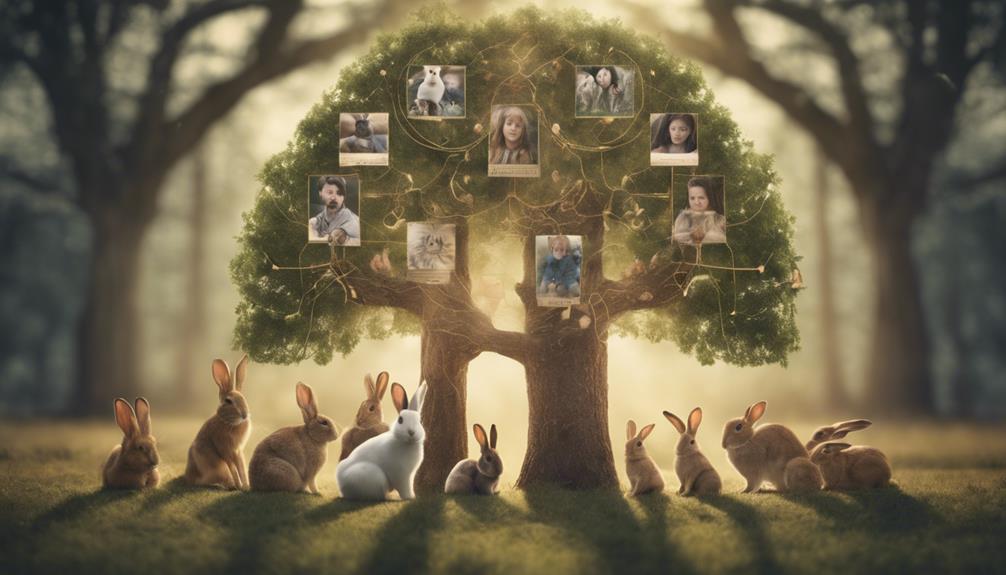
Genetic relationships can reveal a lot about the shared characteristics and behaviors of Rabbit's relatives. Take the order Rodentia, for instance. Rabbits are closely related to other lagomorphs like hares and pikas. In fact, genetic studies have shown that these species all share a common ancestor, which explains why their DNA sequences are so similar.
When you look at the genetic similarities between these species, some interesting patterns emerge. For example, hares are very genetically similar to rabbits, which makes sense given their exceptional running abilities. Pikas, on the other hand, are moderately similar, and they share characteristics with rabbits like being adapted to cold climates. Squirrels, despite being in the same order, are quite genetically different and have distinct behaviors like dwelling in trees.
Understanding these genetic relationships provides valuable insights into the evolutionary history and shared traits among Rabbit's relatives in the order Rodentia. By studying these relationships, we can better understand why these species developed certain characteristics and behaviors, and how they're connected to one another.
Ecological Niche
Let's dive into the world of wild rabbits and their relatives to see how they fit into their ecosystems.
When we look at the ecological niche of these furry creatures, we can see just how important they're to their habitats.
Wild rabbits, belonging to the genus Sylvilagus, are herbivores that play a vital role in many ecosystems around the world. They mainly eat grasses, clover, and other vegetation, which affects how plants grow and are distributed in their habitats.
One of the key things about wild rabbits is how quickly they can reproduce. This makes them an important food source for lots of predators, like foxes, hawks, and snakes.
Their burrowing behavior also changes the structure and aeration of the soil, which can have a ripple effect on other species that live in the same habitat. On top of being an important food source and changing their environment, wild rabbits also help spread seeds by eating a variety of plants and then depositing the seeds in different locations.
By observing wild rabbits in their natural habitats, we can see just how adaptable they’re to different environmental conditions and how complex their interactions are with the ecosystems they inhabit. These observations reveal typical wild rabbit characteristics, such as their keen sense of hearing and rapid reproductive rates, which allow them to thrive despite various threats. Additionally, their foraging behavior and social structures demonstrate the intricate balance they maintain with other species in their environment. Understanding these dynamics not only highlights the adaptability of wild rabbits but also underscores their vital role in maintaining ecological health.
Studying their ecological niche gives us valuable insights into the delicate balance of nature and how species are connected in the wild.
Conservation Status
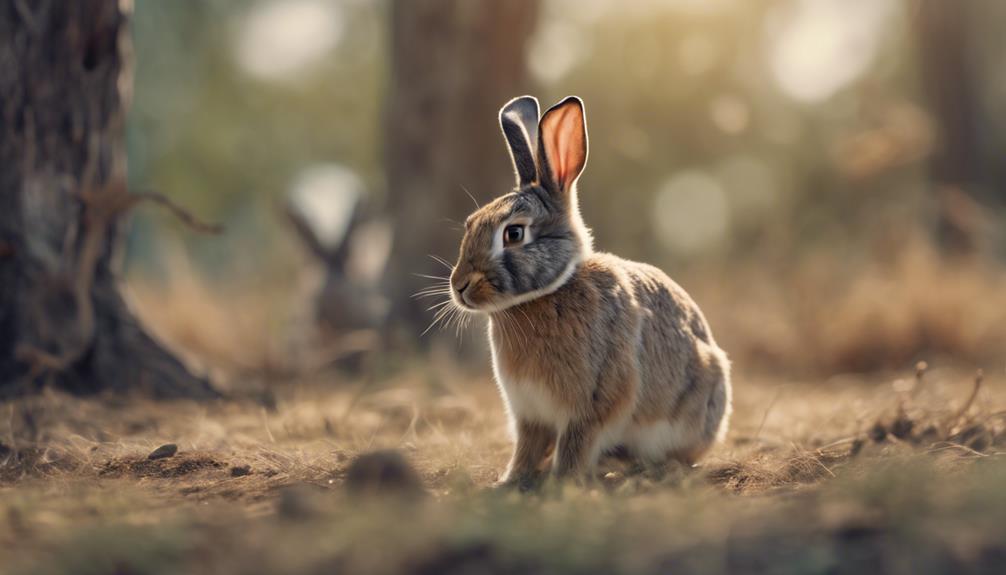
Wild rabbits and their relatives are facing some big problems.
One of the main issues is that their homes are being destroyed or degraded because of human activities like farming, city growth, and cutting down trees. This leaves them with small patches of land that aren't connected, making it hard for them to find food, a place to live, and someone to mate with.
On top of that, they've to deal with predators like foxes, birds of prey, and feral cats that see them as a meal. Climate change is also affecting their lives, changing the availability of their favorite foods and messing with their breeding cycles.
To help these animals survive, we need to work together on conservation efforts. This includes fixing damaged habitats, controlling predator populations, and breeding programs in captivity.
It's crucial that researchers, conservationists, and local communities team up to address these challenges and ensure that hares and rabbits continue to thrive in the wild.
Conclusion
If you take a closer look at Rabbit's relatives, you'll start to see the connections between them.
They share a common ancestor that has influenced their physical characteristics, behaviors, and the roles they play in their ecosystems.
This shared history has created a family tree with hares, pikas, and rabbits as branches.
Their similarities aren't coincidental – they've developed over time through adaptation and evolution.
As a result, they've become a diverse but unified group, known as the lagomorph family.
This family is just one part of the natural world, but it's a great example of how interconnected everything is.

